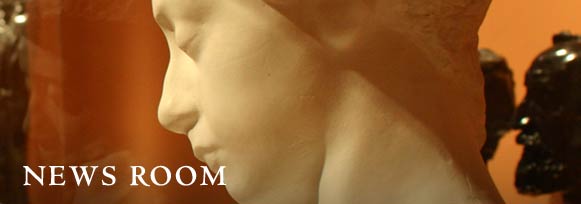Adventures in the Human Virosphere: The Use of Three-Dimensional Models to Understand Human Viral Infections
Virus Models Reveal Diverse Forms and Students’ Creativity
April 11, 2012–December 16, 2012
Stanford, California — Demonstrating the beauty of the molecular world as well as the extraordinary creativity of Stanford students, models of herpes, papilloma, polio, rabies, smallpox and other human viruses fill the Rowland K. Rebele Gallery in the Cantor Arts Center at Stanford University. Many of the models appear at first glance as bedazzled flights of fancy, but the accompanying labels reveal the science behind their creation.
Viruses are sub-microscopic biological particles that infect cells and use them to reproduce many more entities like themselves. Since viruses are genetically simple and generally symmetrical, the models display a surprising aesthetic beauty.
The exhibition “Adventures in the Human Virosphere: The Use of Three-Dimensional Models to Understand Human Viral Infections” is now open to the public and continues on view through October. Stanford undergraduates created the models for the multidisciplinary course “Humans and Viruses,” which covers all aspects of the viruses that infect humans. Students used an amusing array of materials to construct the 13 models on display. Traditional art media of wood, ceramics and origami used for some models contrast with pasta, Play-Doh, pipe cleaners, glitter, beads, ribbon and found-objects for others. The models’ spirit of whimsy, however, belie the ominous nature of their subjects, creating an eerie tension.
For three decades, Stanford Associate Professor Robert Siegel, M.D., Ph.D., in the Department of Microbiology and Immunology, has taught the junior-senior course “Humans and Viruses” and has required his students to research and build a three-dimensional representation of a specific virus. Siegel believes the models’ ability to explain and to provide insight into viral structure and function is a powerful teaching tool, and model-building offers a kinesthetic approach to understanding that is often more enduring than traditional approaches to learning. “And besides,” Siegel said, “they’re fun.”
This exhibition is made possible by the Geballe Fund.
# # #
VISITOR INFORMATION: Cantor Arts Center is open Wednesday – Sunday, 11 am - 5 pm, Thursday until 8 pm. Admission is free. The Center is located on the Stanford campus, off Palm Drive at Museum Way. Parking is free after 4 pm weekdays and all day on weekends. Information: 650-723-4177, museum.stanford.edu
Publicity Photos: Contact PR Assistant Manager Margaret Whitehorn (650-724-3600, mmwhite@stanford.edu) for high-resolution images to publicize the exhibition.


Students with Professor Robert Siegel, present their models during The Model Marathon. Photo credit Carlos Seligo.

Angela Cesena, Model of Papillomavirus, 2011. Cardboard, yellow and green crepe paper, plastic syringes, Q-Tips, and Band-Aids.

Elena Jordan, Model of SARS Virus, 2011. Fabric with glitter, puff balls, pipe cleaners, ribbon, pillow fill, hot glue.



